 |
 |
 |
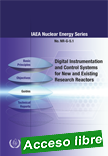 |
Digital Instrumentation and Control Systems for New and Existing Research Reactors
IAEA ¦ Nuclear Energy Series ¦ NR-G-5.1 ¦ 2021 ¦ 77 pages
IAEA work in the area of research reactor operation and maintenance is aimed at enhancing the capabilities of Member States to utilize good engineering and management practices to improve research reactor reliability and availability. In particular, the IAEA supports activities addressing ageing management of research reactor instrumentation and control (I&C) systems. The purpose of this publication is to provide engineering guidance on the design, and operational aspects of digital I&C systems for the refurbishment of existing facilities and for new research reactors.
|
Key areas addressed include codes and standards applicability, licensing issues, dealing with the change in human-system interface from analogue to digital technology, software verification and validation activities, periodic testing and inspection, and configuration management. The publication contains technical descriptions and summaries of available digital systems that have been utilized in both new research reactor designs, and in the upgrading of older analogue safety and control systems. This guidance is foreseen for the broad spectrum of research reactors types existing today.
|
 |
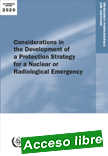 |
Considerations in the Development of a Protection Strategy for a Nuclear or Radiological Emergency
IAEA ¦ EPR-Protection Strategy (2020) ¦ Date published: 2021 ¦ 218 pages
This publication provides Member States with practical guidance and a stepwise approach for the development, justification and optimization of a protection strategy for a nuclear or radiological emergency, for the application of reference levels and generic criteria within the protection strategy as well as on the implementation of the strategy during an emergency response.
|
This publication also elaborates in more detail on the planning basis necessary to support the development of a justified and optimized protection strategy as well as on the processes of justification and optimization to be applied by responsible authorities in a State. In addition, this publication provides a template outline of a protection strategy that can be used by States when developing their protection strategy and examples of protection strategies for postulated nuclear or radiological emergencies associated with facilities, activities and sources in the five emergency preparedness categories (EPCs) described in the GSR Part 7
|
 |
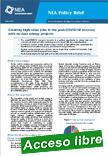 |
Creating high-value jobs in the post-COVID-19 recovery with nuclear energy projects
OECD - Nuclear Energy Agency ¦ NEA
Nuclear power is capable of supplying large amounts of low carbon electricity and heat cost effectively while creating a large number of high value jobs in the local and national economies. The post COVID 19 economic recovery is a perfect opportunity to create jobs and economic development while continuing to move ahead with the energy transition. Investing in nuclear energy creates a large number of high skilled jobs, accelerates the transition to a low carbon economy, and increases energy resilience.
|
Nuclear energy projects are a proven way to create large numbers of long term, high skilled domestic jobs that pay premium wages. Nuclear projects provide high spill over investment into the local and regional economy.
|
 |
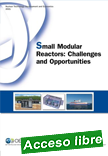 |
Small Modular Reactors: Challenges and Opportunities
OECD - Nuclear Energy Agency ¦ NEA No. 7560 ¦ 2021 ¦ 56 pages
Small Modular Reactors (SMRs) are gaining recognition among policymakers and industry players as a promising nuclear technology. SMRs can be defined as nuclear reactors with a power output between 10 MWe and 300 MWe that incorporate by design higher modularisation, standardisation and factory-based construction levels enabling more predictable delivery models based on the economies of series. Today, more than 50 concepts are under development covering a wide range of technology approaches and maturity levels.
|
The value proposition of the SMR technology also includes potential financing and system integration benefits. These attractive features, however, rely on a business case that requires the development of a global SMR market to become economically viable. Large-scale deployment of SMRs faces several technical, economic, regulatory and supply chain challenges and will need considerable governmental efforts and efficient international collaborative frameworks to be realised in the next decade.
|
 |
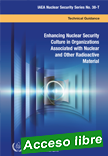 |
Enhancing Nuclear Security Culture in Organizations Associated with Nuclear and Other Radioactive Material
IAEA ¦ Nuclear Security Series ¦ No. 38-T ¦ 2021 ¦ 206 pages
Nuclear security culture is an important component of an effective nuclear security regime, as it serves as a tool to improve the performance of the human component at nuclear facilities and organizations to counter both insider and outsider threats. Security culture connotes not only the technical proficiency of the people but also their awareness of security risks and motivation to follow established procedures, comply with regulations and take the initiative when unforeseen circumstances arise.
|
A workforce made up of individuals who are vigilant, who question irregularities, execute their work diligently and exhibit high standards of personal and collective behaviour is able to achieve effective nuclear security. Building upon this understanding of the importance of a strong nuclear security culture, this publication provides practical guidance on how to implement a systematic nuclear security culture enhancement programme.
|
 |
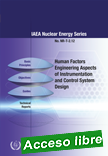 |
Human Factors Engineering Aspects of Instrumentation and Control System Design
IAEA ¦ Nuclear Energy Series ¦ NP-T-2.12 ¦ 2021 ¦ 117 pages
The focus of this publication is to integrate knowledge from the disciplines of human factors engineering (HFE) and I&C to emphasize an interdisciplinary approach for the design of better HSIs and consequently improved human performance in nuclear power plants. This publication provides practical explanations of the HFE processes and corresponding outputs that inform the I&C development.
|
The framework outlined in this publication takes into consideration the I&C life cycle described in IAEA Safety Standards Series No. SSG-39, Design of Instrumentation and Control Systems for Nuclear Power Plants, and the HFE programme guidance in IAEA Safety Standards Series No. SSG-51, Human Factors Engineering in the Design of Nuclear Power Plants, for easing the inclusion and application of these two disciplines within an engineering design process. This publication specifically addresses points in the design process where collaboration between HFE, I&C and other important disciplines and stakeholders is paramount, and it identifies key tools and tasks for exchanging inputs and outputs between different design disciplines, particularly I&C and HFE.
|
 |
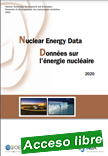 |
Nuclear Energy Data 2020 / Données sur l'énergie nucléaire 2020
OECD - Nuclear Energy Agency ¦ NEA No. 7556 ¦ 2021 ¦ 128 pages
Nuclear Energy Data is the Nuclear Energy Agency’s annual compilation of statistics and country reports documenting nuclear power status in NEA member countries and in the OECD area. Information provided by governments includes statistics on total electricity produced by all sources and by nuclear power, fuel cycle capacities and requirements, and projections to 2040, where available.
|
Country reports summarise energy policies, updates of the status in nuclear energy programmes and fuel cycle developments. In 2020, the COVID-19 pandemic has highlighted the importance of electricity security in modern societies. Although the long-term implications for electricity generation are difficult to assess, during the crisis nuclear power continued to support the security of supply and has been, together with renewables, one of the most resilient electricity sources. In 2019, nuclear power continued to supply significant amounts of low carbon baseload electricity, despite strong competition from low-cost fossil fuels and renewable energy sources. Governments committed to having nuclear power in the energy mix advanced plans for developing or increasing nuclear generating capacity, with the preparation of new build projects making progress in countries such as Finland, Hungary, Turkey, the United Kingdom and Russia. Further details on these and other developments are provided in the publication’s numerous tables, graphs and country reports.
|
 |
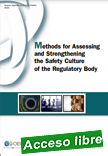 |
Methods for Assessing and Strengthening the Safety Culture of the Regulatory Body
World Health organization; IAEA ¦ 5 March 2021 ¦ 142 pages
This report further explores some of the key elements presented in The Safety Culture of an Effective Regulatory Body (2016), commonly known as the NEA Green Booklet, and provides both an overview and practical information on the methods and tools used by regulatory bodies to assess their own safety culture and to build safety culture competence and awareness. The NEA encourages regulatory bodies to use this report as a reference for reviewing and improving their activities to foster and enhance a healthy safety culture.
|
Finally, the report proposes ten conclusions to inspire managers to develop and sustain efforts to maintain a healthy safety culture within the regulatory body.
|
 |
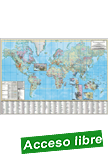 |
World Distribution of Thorium Deposits
IAEA ¦ STI/PUB/1928 ¦ Date published: 2021
The World Distribution of Thorium Deposits map, at a scale of 1:35 000 000, is intended to be a snapshot of the IAEA ThDEPO database showing the broad distribution of thorium resources worldwide. The map displays the Thorium deposit-type classification system and deposit size ranges, and includes interactive querying and layer capability in the Adobe PDF version.
|
.
|
 |
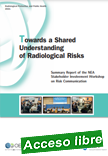 |
Towards a Shared Understanding of Radiological Risks
OECD - Nuclear Energy Agency ¦ NEA No. 7554 ¦ 2021 ¦ 76 pages
Summary Report of the NEA Stakeholder Involvement Workshop on Risk Communication
The decisions made about protective actions of people and the environment in situations involving exposure to ionising radiation have tended to be driven by subjective judgements about the health risks that radiation exposure may cause. In order to reach decisions that are effective and sustainable, it is essential for nuclear safety regulators, governments, nuclear facility operators and other nuclear energy decision makers to communicate scientific knowledge and uncertainties, and technical and regulatory information regarding radiological and other risks to all stakeholders.
|
Communicating such information can be complex since people judge and evaluate risks differently depending on the context and on their perceptions of risk. In this context, the Nuclear Energy Agency (NEA) organised the “Stakeholder Involvement Workshop on Risk Communication: Towards a Shared Understanding of Radiological Risks” in September 2019. The workshop provided an opportunity for participants to share perspectives and lessons learnt in risk communication, identifying what has been effective and what has been less effective under different prevailing circumstances. Throughout the three-day workshop, trust has appeared as an essential and demonstrated value for effective communication. By understanding how situation-specific factors influence risk communication, a common framework addressing such circumstances can begin to emerge. This report attempts to capture the collective wisdom generated over the three days of interactions in the hope that the knowledge gained from this workshop will benefit governments and citizens alike.
|
 |
| |
|
|

|
|
|
| |
|
|
| |
| |
|
|
| |
| |
|
|
| |
| |
|
|
|
| |
| |
